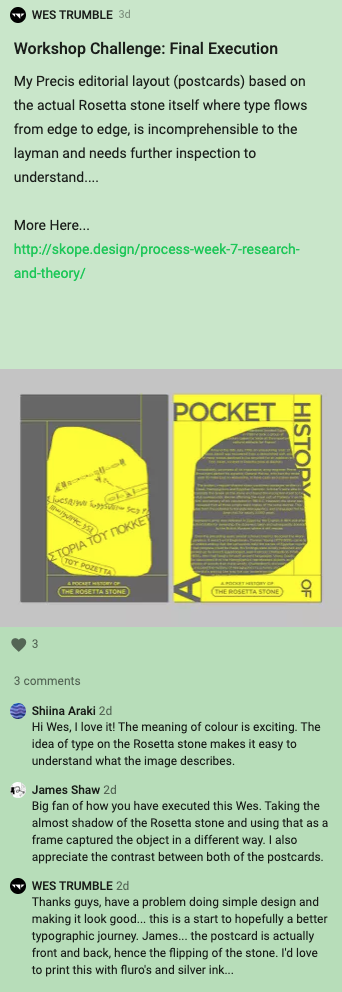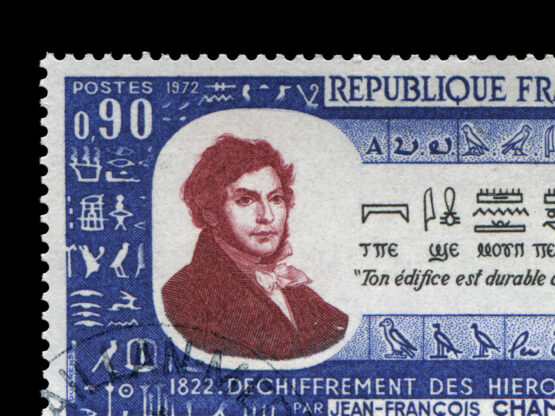REFLECTIONS ON LECTURES/SOURCE MATERIAL:
How do you approach research methodologies for your academic Journey?
Up until now I have followed a plan for strategy and research as set out by the last agency I worked in.
Therefore my answer to the question of how I define the word research is as follows:
Gaining understanding (knowledge) and context for a particular business, market, its semiotics (similarities to other brands/dissimilarities) and analysis of the given brief.
When Martin asks the question do you see research as a science based, art or craft, academic activity I would say all of the above. Science in knowing the trends, market and how to disseminate research, Art or craft in the creative collated landscape or reference points, and academic in our response to find either a gap or alignment with the market based on research test results. Our proposition (or philosophical standpoint) for the work we are going to do can also be rooted in academia and gained insights.
CURIOSITY
The exercise on curiosity was interesting and links back to our last week where we were 'noticing the unknown'. By opening up our curiosity and retraining the focus on where we look we can better understand our place and others in the world. I found that I don't like where I am living which is a dull cramped space full of stuff and not a welcoming space to cook or invite people in.
PHILOSOPHY (The nature of existence, reality and knowledge).
On rationalism: Are we born with inherent reason? Is reason innate? According to a study carried out in 2018 by Nicoló Cesana-Arlotti, a postdoctoral fellow in the Department Psychological and Brain Sciences at Johns Hopkins University, our capacity to reason logically may not actually depend on language. The findings show babies still too young to speak can reason and make rational deductions. "A major component of human logic, he notes, relates to thinking about alternative possibilities and eliminating inconsistent ones". "What this new study reveals is that preverbal infants are also working through this same type of serial reasoning, and doing so before robust language abilities have been mastered".
(Source: Babies Think Logically Before They Can Talk [2018, March 15] Retrieved from https://www.scientificamerican.com/article/babies-think-logically-before-they-can-talk/).
The empiricist view that our senses and experience are the starting point for all knowledge is also supported in this study as surely the infants involved had to experience certain scientific test models to be able to rationalise non-verbally. Is there a cross over point between rational and empiricist thinking? From a quick search I can see that they both believe in the existence of God and use skepticism to understand the meaning of our existence. "However, God's responsibility in how humans uncover the truth about their existence is fundamentally different".
(Source: Rationalism vs. Empiricism: Similarities & Differences. [2017, December 13]. Retrieved from https://study.com/academy/lesson/rationalism-vs-empiricism-similarities-differences.html.
Areas of philosophical study:
Metaphysics (Ontology) - Nature of being.
Aesthetics (Axiology) - Nature of beauty.
Ethics (Axiology) - How we conduct ourselves.
Epistemology - Theory of knowledge itself: Origins, Validity, Methods, Scope and limitations.
Methodology - Principles for the generation of knowledge: Natural, Human, Science or Study (Rationale).
Method - Collection process for analysis of decision making (used to collect data from different sources).
METHODS OF RESEARCH
Research Paradigms
Positivism - Objective human experience from observable determined regularity (Facts).
Interpretivism - Understanding the world as it is experienced and made meaningful by human beings.
Social Constructionism - Critical reflection of perceived experience.
Phenomenology - Direct experience of objects to arrive at new meanings.
Symbolic Interactionism - Understanding culture from within.
Qualitative (Deductive research/subjective questioning) - Experience through discourse (flexible method, intuitive study of human behaviour and data analysis). Used when relevant data exists.
Quantitive (Inductive research based in fact/objective) - Measurable data (Numbers and Facts). Used for in-depth research of an unexplored subject.
"Design does not exist in a vacuum but is part of a larger historical and cultural process."
Martin Hoskin's Lecture
—
In Hillary Collins's book (Collins, Hilary/Creative research: The theory and practice of research for the creative industries) it was interesting that she asserts that your 'assumptions' underpins your research strategy. By assumptions does she mean that your own standpoint informs the questions that arise about a particular subject? I think Martins notes on whether the assumptions are relevant to the subject makes more sense. 'Issues raised from study and research that is of academic interest'.
Does objective and subjective thinking come from rationalism and empirical thought? Objective = based in reality and Subjective = is based in perception and opinion (experience) so there are links to these individual philosophical paths. According to WikiPedia, 'In philosophy, objectivity is the concept of truth independent from individual subjectivity (bias caused by one's perception, emotions, or imagination)'.
In studying the lecture, reading the extracts from Hilary Collin's book and the extracts Ian Noble (Noble, Ian/Visual research: an introduction to research methods in graphic design – Why and How) it strikes me how many different methodologies and methods you can follow for your research strategy. I also feel the the realist view of rationalism and the experiential view of empiricism can become intertwined in the process especially when it gets broken down into research philosophies or paradigms.
TAKE OUTS
— There are many differing approaches to research and knowing which approach to pick that is relevant and going to give the right outcome is tricky.
— More re-reading required on this to gain a clear understanding of their individual use.
Hilary's book alludes that you need to state your philosophical position before you conduct your research. So here is mine —
Workshop Challenge: Research Processes
PHILOSOPHICAL POSITION, METHODOLOGY AND METHODS FOR RESEARCHING MY OBJECT
I am going to try to apply the following research methodologies and methods for studying my object:
PHILOSOPHY (EMPIRICIST)
Aesthetics (Axiology) - Nature of beauty.
Ethics (Axiology) - How we conduct ourselves.
METHODOLOGY
Epistemology - Theory of knowledge itself: Origins, Validity, Methods, Scope and limitations.
Metaphysics (Ontology) - Nature of being.
RESEARCH PARADIGM
Positivism - Objective human experience from observable determined regularity (Facts).
OBJECT
The Rosetta Stone
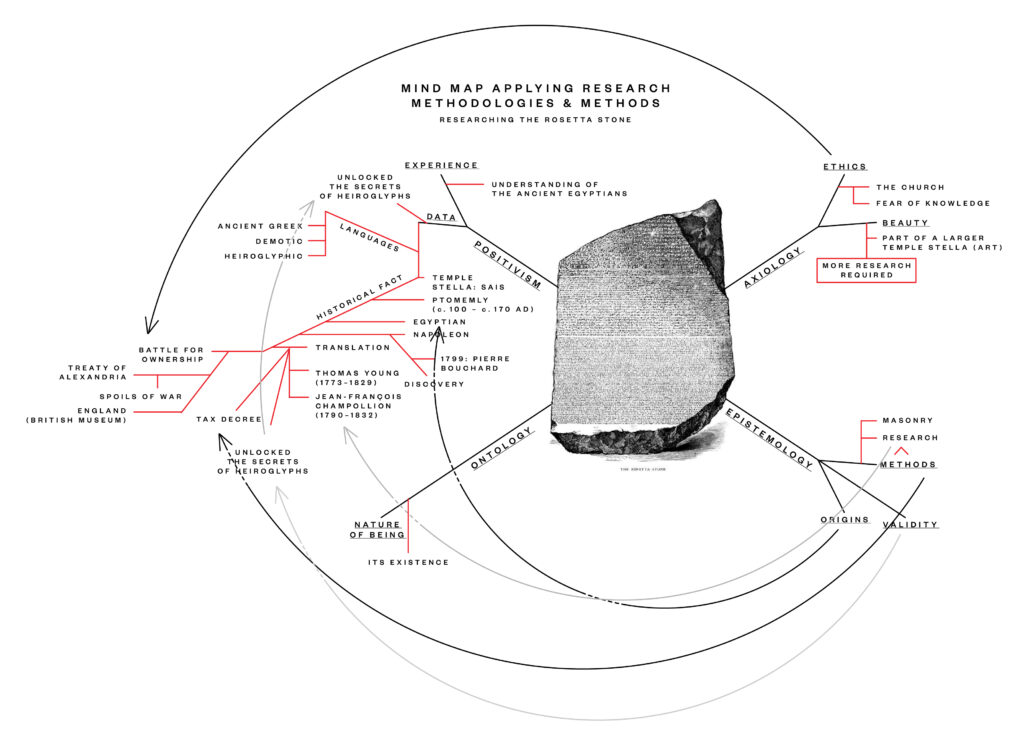
TAKE OUTS
— In mind mapping the research methodologies, methods and paradigms I have been able to distill the information, giving me a clear framework for moving forward and raising some questions.
Workshop Challenge: Research Questions
After looking at the mind map there are two areas of questioning that still need to be explored. As the Rosetta Stone is rooted in historical fact or Positivism, every stone seems to have been turned (excuse the pun) in documenting its journey from its discovery to the present day.
However there are a couple of areas that still need to be explored. Was the Rosetta Stone ever considered to be a beautiful object (AXIOLOGY/Aesthetics)? Subjectively I found a former director of the (Neil MacGregor) British Museum referring to it as a "decidedly dull" to look at and when you read it "it's pretty dull too... mostly bureaucratic text about tax concessions" (Source: MacGregor, Neil/A history of the world in 100 objects. retrieved from https://www.bbc.co.uk/sounds/play/b00sbrz3). In my own view I see it as a work of art, both typographically and physically as an object. Is this because I know what it unlocked in Ancient Egyptian history? Is this because I have a passion for typography?. Maybe so but it is also aesthetically pleasing. So did any other scholars see in it as a object with inherent aesthetic beauty?. Are there any diaries that exist from either Pierre Bouchard or Napoleon and their reaction to it?
I also remember in the BBC series on Egypt (BBC/The mystery of the Rosetta Stone. YouTube: https://www.youtube.com/watch?v=Q4RKa_3wXZQ) that the church opposed its translation. I need to dig deeper on this to verify my facts. Did the church really oppose the translation of the Rosetta Stone?
Q1: Was the Rosetta Stone ever considered to be a beautiful object (AXIOLOGY/Aesthetics)?
At the time of writing I am unable to source any mention of its aesthetic beauty. However, subjectively I do think that scholars saw the beauty in its ability to unlock a door to the past.
Q2: DId any other scholars see in it as a object with inherent aesthetic beauty?
At the time of writing I am unable to source any mention of its aesthetic beauty.
Q3: Are there any diaries that exist from either Pierre Bouchard or Napoleon and their reaction to it? (Mostly Source Material)
On its discovery on 15 July 1799, Pierre François Bouchard, an engineer in the Napoleonic Army tasked with 'digging the foundations to an addition to a fort (Julien) near the town of Rashid (Rosetta)', (Retrieved from: https://blog.britishmuseum.org/everything-you-ever-wanted-to-know-about-the-rosetta-stone/) 'was immediately convinced of its importance, an enthusiasm he passed on to generals Menou and Bonaparte'. (Retrieved from: https://en.wikipedia.org/wiki/Pierre-Fran%C3%A7ois_Bouchard). 'He extracted the stone from an old wall which was being demolished as part of the construction work on Fort Julien'. (Retrieved from: https://www.worldhistory.org/Rosetta_Stone/). 'General Menou, realising its importance, had the stone sent to Alexandria where casts and copies were made'. (Retrieved from: https://www.worldhistory.org/Rosetta_Stone/). 'The ancient Greek on the Rosetta Stone told archaeologists that it was inscribed by priests honouring the king of Egypt, Ptolemy V, in the second century B.C. More startlingly, the Greek passage announced that the three scripts were all of identical meaning'. (Retrieved from: https://www.history.com/this-day-in-history/rosetta-stone-found.). 'Almost immediately, Bonaparte remarked on the stone’s potential. “There appears no doubt that the column which bears the hieroglyphs contains the same inscription as the other two,” he said before the National Institute in Paris that autumn. “Thus, here is a means of acquiring certain information of this, until now, unintelligible language.” the Rosetta Stone was already the subject on international intrigue when British forces seized it in 1801 after defeating the French in Egypt. By then, several casts and copies of its text had been made, allowing researchers across the globe to begin experimenting with potential translations.' (Andrews, Evan - 2018/The Quest to Decipher the Rosetta Stone - Retrieved from: https://www.coursehero.com/file/80749863/Andrews-2018-TheQuesttoDeciphertheRosettaStone-HISTORYpdf/).
At the time of writing I am unable to source either a diary extract from Bouchard or Bonaparte.
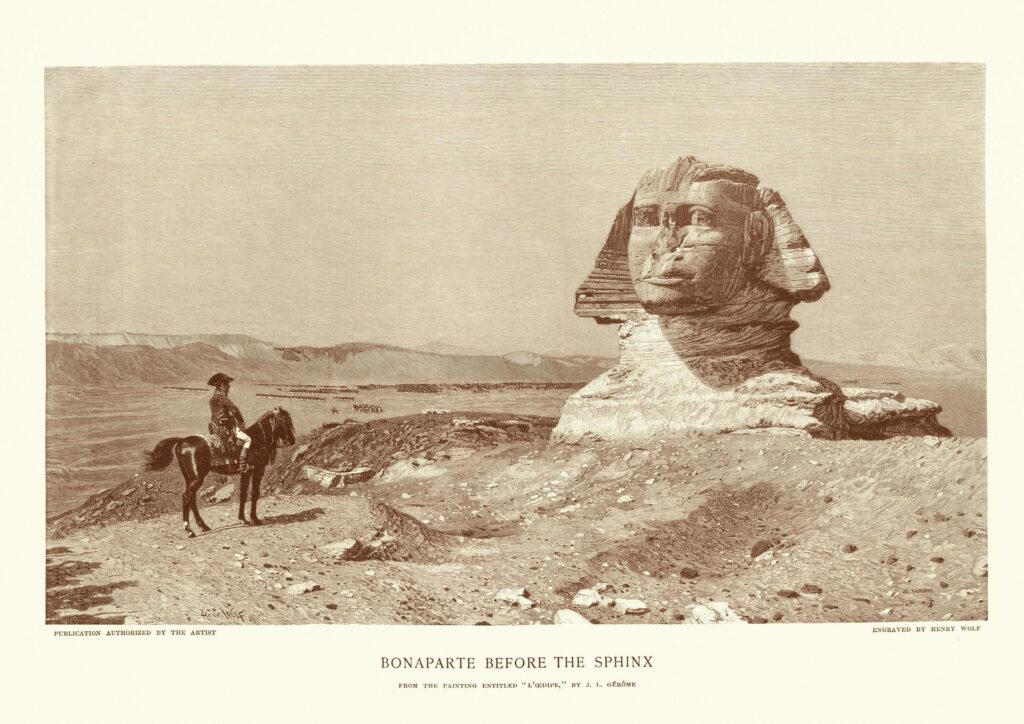
"There appears no doubt that the column which bears the hieroglyphs contains the same description as the other two…thus, here is a means of acquiring certain information of this, until now, unintelligible language".
Napoleon Bonaparte
—
Q4: Did the church really oppose the translation of the Rosetta Stone?
According to the BBC Series 'EGYPT' (Rich, Jonathan, Episode 5 - The Mystery of the Rosetta Stone/Nov 2005) 'Champollion's exhaustive achievement (in starting to unlock the secrets of hieroglyphics through the use of Coptic) edged him into dangerous territory. The Catholic Church was deeply concerned about what an understanding of the hieroglyph's might lead to. The reason, Noah's flood. Biblical scholars dated the event to the year 2349 B.C. If the hieroglyphics proved that the whole Egyptian civilisation had begun before the flood was to have supposed to have happened, and continued unaffected by it then that would create a serious problem for the church. The Bible was considered to be historically accurate at the time, so if the code of the pharaoh's proved that it wasn't the church's teaching would be seriously undermined'. (Transcribed).
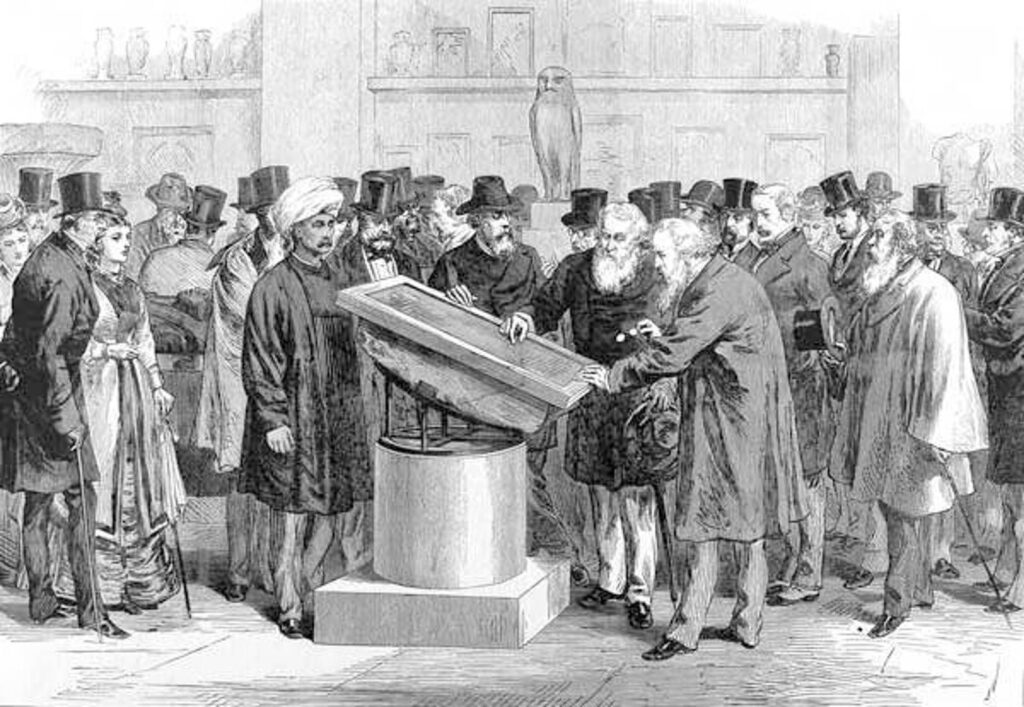
TAKE OUTS
— At the time of researching I was unable to determine whether the Rosetta Stone was ever looked at for its aesthetic beauty.
— The church was opposed to the translation for fear of proving certain aspects of the bible to be untrue.
Workshop Challenge: Precis Preparation
Precis/ˈpreɪsi/noun: a summary or abstract of a text or speech.
In preparing for the precis I have gathered research applying methodologies, methods, research paradigms and mind maps as well as factually based historical reference points. Note that some of the source material may appear to be missing from the above but I have listed sources underneath the precis.
Workshop Challenge: Precis
A POCKET HISTORY OF THE ROSETTA STONE
When Napoleon invaded Egypt in 1798 he took a group of scholars tasked to ‘seize all the important cultural artifacts for France’.
Around the 15th July, 1799, an unassuming ‘slab’ of black basalt was recovered from a demolished wall, one of many stones destined to be recycled for an addition to Fort Julien, located in Rosetta (now el-Rashid).
Immediately convinced of its importance, army engineer Pierre Brouchard alerted his superior, General Menou, who had the stone sent 35 miles East to Alexandria, to have casts and copies made.
The broken, irregular-shaped stone contained passages written in Greek, Hieroglyphics and Egyptian Demotic. Scholar’s were able to translate the Greek on the stone and found the inscription itself to be a dull, bureaucratic decree affirming the royal cult of Ptolemy V on the first anniversary of his coronation in 196 B.C. However, the stone also revealed that all three scripts were copies of the same decree. This gave them the potential to translate Hieroglyphics, and a language that had been lost for nearly 2,000 years.
Napoleon’s army was defeated in Egypt by the English in 1801 and after a short battle for ownership, the stone was taken and subsequently donated to the British Museum where it still resides.
Over the preceding years several scholars tried to decipher the Hieroglyphics. It wasn’t until Englishman, Thomas Young (1773-1829), came to an understanding that the cartouches held the names of Egyptian royalty that progress could be made. His findings were widely published and picked up by French Egyptologist Jean-Francois Champollion (1790-1832), who had taught himself ancient languages. Using Coptic, he discovered that the Hieroglyphics represented objects and groups of sounds that made words. Champollion’s discovery unlocked the mystery of Hieroglyphics to scholars and scientists paving the way for our understanding of Ancient Egypt.
SOURCE MATERIAL
1: BBC Sounds Website: (MacGregor, Neil/A history of the world in 100 objects. Retrieved from https://www.bbc.co.uk/sounds/play/b00sbrz3).
2: The British Museum Blog: (Retrieved from: https://blog.britishmuseum.org/everything-you-ever-wanted-to-know-about-the-rosetta-stone/).
3: YouTube: (BBC/The mystery of the Rosetta Stone. Retrieved from YouTube: https://www.youtube.com/watch?v=Q4RKa_3wXZQ).
4: Wikipedia: (Retrieved from: https://en.wikipedia.org/wiki/Pierre-Fran%C3%A7ois_Bouchard).
5: worldhistory.org Website: (Retrieved from: https://www.worldhistory.org/Rosetta_Stone/).
6: history.com: (Retrieved from: https://www.history.com/this-day-in-history/rosetta-stone-found/).
7: coursehero.com: Andrews, Evan - 2018/The Quest to Decipher the Rosetta Stone - Retrieved from: https://www.coursehero.com/file/80749863/Andrews-2018-TheQuesttoDeciphertheRosettaStone-HISTORYpdf/).
8: BBC Series 'EGYPT' (Rich, Jonathan, Episode 5 - The Mystery of the Rosetta Stone/Nov 2005).
9: BBC Website: (An Icon of Understanding. Retrieved from https://www.bbc.co.uk/ahistoryoftheworld/objects/awwjbIoORUaQXm9LmiTz8A).
10: BBC Website: (An Icon of Understanding comments: Parkinson, Richard. Curator, British Museum ).
TAKE OUTS
— It is very hard to distill so much history into 300 words.
— I still need to bring more of my own voice into future Precis'
Workshop Challenge: Editorial Layout
SKETCHES
Some doodles for my final piece. Toying with the following ideas:
Rosetta Stone
1: Yellow = RA the sun god of Egypt.
2: Introduction of the 3 scripts found on stone.
3: Pocket sized format - like a travel guide.
4: Illegibility built in the title to show idea of mystery and translation.
5: Cartouches built into the design.
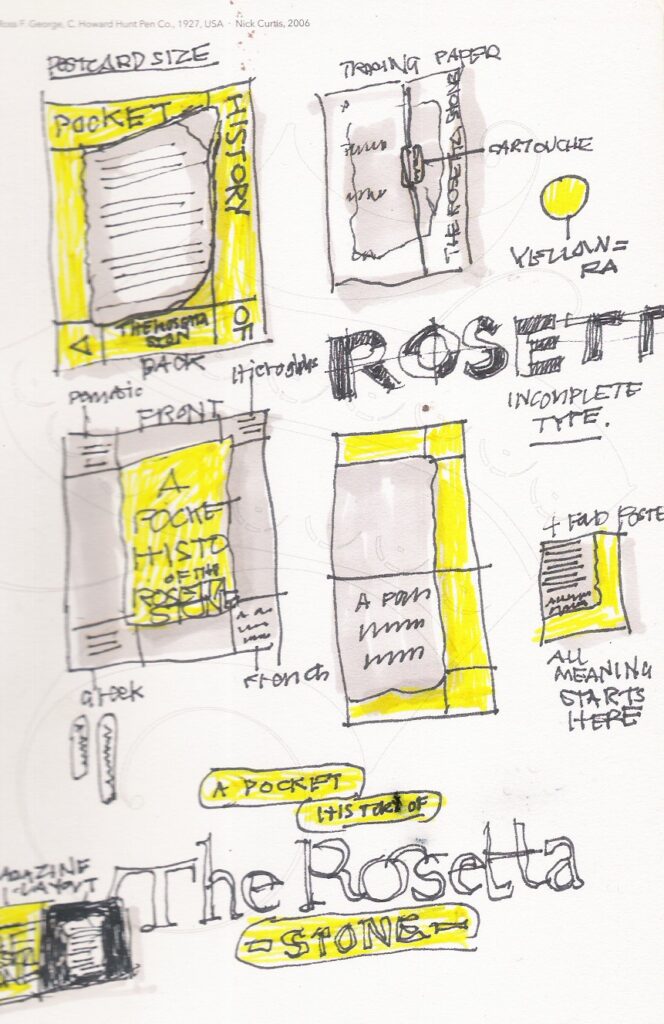
THE IDEAS WALL
No real feedback this week, but I was late on posting so I need to manage my time better. Gave James some advice on my cheap materials haha.

Workshop Challenge: Final Execution
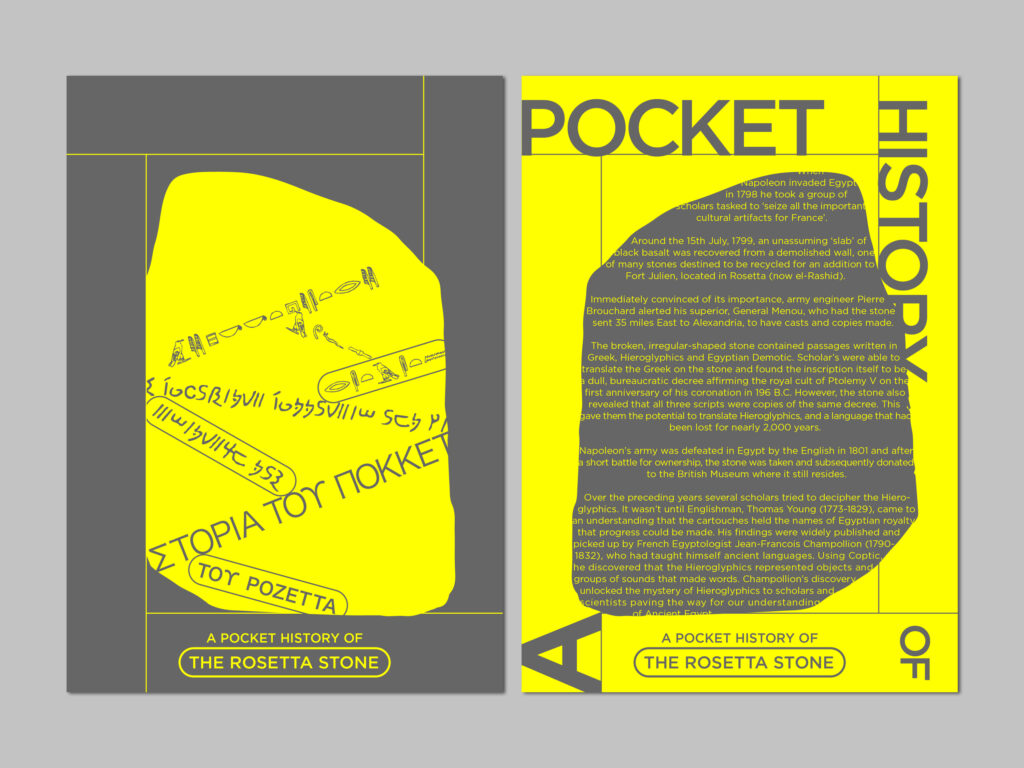
ABOVE: My Precis editorial layout (postcards) based on the actual Rosetta stone itself where type flows from edge to edge, is incomprehensible to the layman and needs further inspection to understand....
THE IDEAS WALL
Very positive feedback from both James and Shiina. Personally I am still working through learning how to unlearn the design approaches I am used to and feel I am still too rigid, but this is one of my more successful attempts to bring play, scale and meaning to the piece I'm creating.
